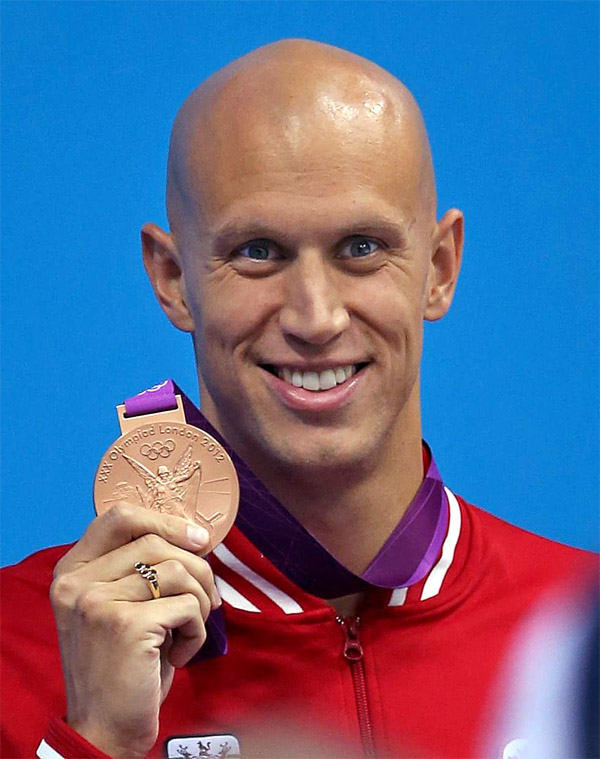
Brent Hayden is a retired International swimmer from Canada. He is the 2012 Olympic Bronze Medallist and 2007 World Champion in the 100m freestyle. He is also a two-time Commonwealth Games Champion and still maintains the Games record in the 100m Freestyle. He currently holds 6 individual Canadian Records and was the sole Canadian champion in the 100m freestyle for the duration of his decade long professional career.
We all know breathing is an essential part of swimming (and being alive!), but did you know that “how” you breath will affect the way you swim? In swimming, we often refer to this as “breath control”. But what does that mean? Breath control, refers to where you hold your air (lungs vs. cheeks, upper lungs vs. lower lungs, etc), how long you hold your breath, when is it appropriate to hold your breath, how slowly or quickly you exhale, and how much or little air you hold in your lungs at a given time.
When teaching beginner swimmers, make sure to use a vowel, “eee” or “ooo” rather than shaking the lips. This way allows them to practice moving air from the lungs rather than the cheeks.
But how does this affect my swimming?
Firstly, where you hold your air will affect your body position in the water. For example, if you take a shallow breath and hold your air in your upper chest, your body creates a forward (or upper) buoyancy which will cause you to swim in an uphill manner and doesn’t sustain you long enough. In order to maintain a proper horizontal alignment for reduced drag, fill the lower lungs (or tummy) and lower back with air so that your diaphragm pulls downwards. Physiological benefits are that it sustains you longer and regulates your heart rate. This creates a central buoyancy and will help your hips and lower body ride at the surface. You can practice this breathing technique while standing and placing one hand on your chest and one hand on your belly. While breathing, alternate between breathing shallow (upper chest) and deep (lower tummy) by feeling which hand is being pushed outward.
Secondly, muscles need oxygen to perform! The best way to make sure your muscles are always being fed adequate amounts of O2, is to make sure you are constantly breathing. Holding your breath between strokes builds up CO2 (carbon dioxide) in your lungs and can lead to light headedness, or in extreme cases blacking out (which is made even worse when you’re in a pool!).
For example in Freestyle, breathing too often will slow your stroke down. So if breathing too little is bad, and breathing too much is bad, what do you do?! The trick is to breath in quickly (and openly) during the inhale phase, and exhale slowly while your face is in the water. In order to fill your lungs quickly during the breath phase, you need to make sure your airways are fully open. For the inhale phase, picture drinking water through a straw. The wider the straw, the faster you’ll be able to drink. It is no different with breathing. Remember, your inhale should be fast enough so as not to slow down the rate of your stroke recovery. Exhale slowly through your nose.
A few of exercises:
- While standing outside the water, put your hands on the outside of the lowest ribs. Fill your tummy and lower back with air. Keep your ribs “expanded” while you slowly exhale. Make sure to not let your ribs collapse the moment you begin exhaling. See how long they can remain expanded while you breath out.
- Fill your tummy and lower back with air and curl into a ball. Make sure your head is tucked in, knees tucked into the chest and your arms are hugging your knees. Hold your breath and watch your self float. When you begin to exhale you will naturally start to sink. To become more aware of your breath control and how it plays a vital role in your body’s natural buoyancy, try to find a space between the bottom and the surface, blow out your air slowly until you find the point of equilibrium where you are no longer rising or sinking. When I was a young swimmer, I used to do this a lot for fun when I didn’t think the coach was looking. Turns out, they were, every time, and I always got in trouble for not listening!
- To practice breathing out of your nose, take a breath into your tummy and begin humming as you descend into the water, or put your face into the water and remain humming as your face breaks the surface (so no water enters the airways on the way up).
Spending dedicated time on breath control will help you develop better swimmers!
